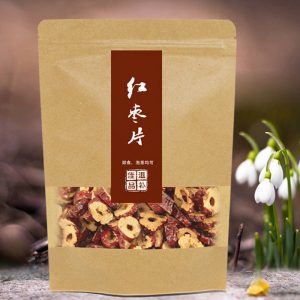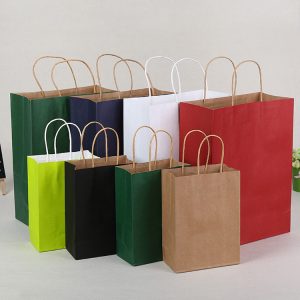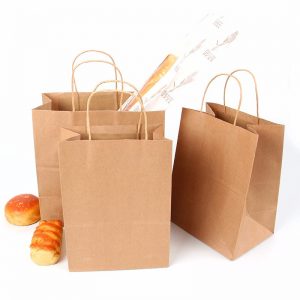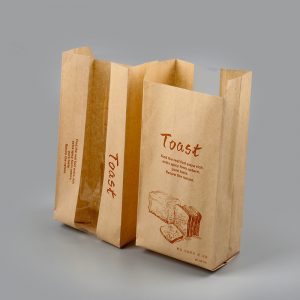Industry news
Shopping bags, as the name implies, are the bags used for shopping. Currently, the shopping bags available on the market mainly include: plastic shopping bags, non-woven shopping bags, paper shopping bags, cotton and linen shopping bags, and the like. In today's society, the pursuit of low-carbon and low-pollution lifestyles, as the population increases, the demand for shopping bags is also increasing. In view of the large amount of pollution, eco-friendly shopping bags have been launched.
plastic
The plastic shopping bag is a packaging material made of polyolefin as a main raw material and appropriately added with other substances. The polyolefins used are mainly polyethylene (PE), commonly known as soft rubber. The main products include low density polyethylene or high pressure polyethylene (LDPE), high density polyethylene or low pressure polyethylene (HDPE), linear low density polyethylene ( LLDPE) and metallocene polyethylene (mLLDPE) are four major categories. In order to reduce their cost, most companies add about 30% calcium carbonate to make plastic shopping bags. These plastic shopping bags do not emit toxic gases when they are burned in the garbage dump. The national plastic shopping bag standard that has just been introduced divides plastic shopping bags into the following three categories:
Ordinary plastic shopping bags - using polyolefins and fillers as raw materials, such plastic shopping bags do not have degradation properties, and will not degrade in the wild. These plastic shopping bags have excellent recyclability and can be recycled many times. The performance of recycled materials is slightly reduced, but it can be used for shopping bags or garbage bags with low performance requirements and less stringent color requirements. The key question is whether the problem can be recovered.
Starch-based plastic shopping bags - These shopping bags use modified starch as the main raw material, and appropriately add a small amount of other degradable materials to improve their performance. The plastic shopping bag can be naturally degraded after being discarded in the field.
Degradable Plastic Shopping Bags - These shopping bags are made from fully degradable plastics with complete degradation properties. The product can be completely degraded into small molecular microorganisms in the wild without any environmental pollution. Foreign plastic shopping bags are promoted abroad. According to the specific composition of fully degradable plastics, they can be divided into the following three categories:
(1) PLA and PHA biodegradable plastics synthesized by bio-fermentation using natural starch as raw materials consume a large amount of food, so the development space is limited.
(2) An aliphatic polycarbonate (APC)-based degradable plastic synthesized from carbon dioxide, which uses the industrial by-product carbon dioxide that is being screamed by everyone as a raw material, which does not consume food and reduces the amount of carbide emissions. Eliminating the global warming caused by greenhouse gases, and killing two birds with one stone, the market prospect is broad.
(3) The complete degradation product of non-starch degrading agent added to ordinary plastics is in the stage of industrialization, such as reliable degradation performance, and has a promising future.
Non-woven fabric
Non-woven shopping bags are non-woven fabrics made of plastic. Many people think that cloth is a natural material, which is actually a misunderstanding. Commonly used non-woven raw materials are polypropylene (referred to as PP, commonly known as polypropylene) or polyethylene terephthalate (referred to as PET, commonly known as polyester), especially PP is the same as PE used in plastic shopping bags. The five general-purpose plastic varieties belong to plastics that cannot be degraded after 50 years. For example, ordinary non-woven shopping bags, which we all call environmentally-friendly shopping bags, are made of polypropylene fiber through special processes. In essence, polypropylene (PP) is a typical type of plastic, and it is also a plastic bag, so it is environmentally friendly. Like ordinary plastic shopping bags, they are not completely degraded. In terms of specific cost performance, the non-woven fabric bag under the same conditions is not as strong as a plastic bag, and is not waterproof, and its price is several times higher than that of the plastic bag. It should be mentioned that the non-woven shopping bags made of more than two kinds of materials are more difficult to recycle and reuse than ordinary plastic shopping bags.
Paper
Everyone knows that the strength and water resistance of paper are not good. Many water-based products such as seafood cannot be packaged, and heavier metal products are also difficult to bear. First of all, the raw materials for making paper are mainly wood, and the world's forest resources are extremely scarce. This is the biggest waste of environmental resources. Secondly, the process of making paper will produce a lot of water pollution. Paper mills across the country, such as street mice, are beaten everywhere. Therefore, the large amount of paper bags is the biggest waste of environmental resources and the greatest pollution to the environment.
Cotton and linen
Cotton and linen shopping bags are stronger than paper bags and can be recycled many times, but the water resistance is not good. The advantage of cotton and linen shopping bags is that they can be recycled, but what if the bags are dirty? Washing with water is the most common method, but washing with water is a waste of water. Phosphorus-containing washing powder contaminates the soil, and ordinary washing does not kill bacteria.
-
0420-19
Canvas bags in canvas bags are widely used in our lives.
Canvas bags in canvas bags are widely used in our lives. It depends on the following advantages: 1. The material of the canvas bag is the same as the material of the cotton bag, whic…
-
0420-19
Introduction and material of cotton bags
The cotton bag is an environmentally friendly bag that is small, convenient, durable and does not pollute the environment. The biggest good It is a reusable use. Thereby reducing th…
-
0420-19
Classification of the use of non-woven bags
According to the product use, it can be divided into: 1. Non-woven bag series: non-woven bags, non-woven handbags, non-woven shopping bags, etc. 2. Non-woven bag series…
-
0419-19
Non-woven bag principle
The non-woven fabric is a non-woven fabric which directly utilizes high-polymer slicing, short fibers or filaments to form a novel fibrous product having a soft, permeable and planar structure b…
-
0419-19
The development of non-woven bag industry, people’s awareness of environmental protection
Today, when environmental protection is increasingly concerned by the public, advocating and implementing environmental protection will undoubtedly enhance the brand image. Therefore, non-woven …
-
0419-19
Four advantages of non-woven bags
Non-woven bags are new products to replace white garbage. With the increase of new energy sources, relevant departments promote environmental protection and energy conservation, and environmenta…
-
0419-19
Non-woven bag printing process
Non-woven bags generally use screen printing technology, which is often referred to as "silk printing", which has been a common printing process for many manufacturers. Generally, it i…
-
0419-19
General characteristics of non-woven bags
The bag is made of polypropylene woven cloth. The bag should be made of one or more layers and can be lined according to EN1086. The bag can be flat or triangular. The tiled em…
-
0418-19
What are the differences between non-woven bags and plastic shopping bags?
Plastic shopping bags are consumables in daily life, and we consume a lot of plastic shopping bags every day. Due to excessive use and recycling, the serious waste of energy resources and enviro…
-
0418-19
How should the non-woven bag be stored?
1. When storing the non-woven bags, customers should keep them in a cool and dry place to avoid wet places; Second, can not be placed outdoors, to prevent sun and rain, because the non-wov…
-
0417-19
The difference between the fabric of non-woven flour bag and ordinary non-woven fabric
Non-woven fabrics are widely used in various packaging industries, and there are also a large number of uses in food packaging. What are the differences between the non-woven bags we use in our …
-
0417-19
10 details that should be paid attention to in the packaging printing plan
Accurate methods are used in planning and manufacturing, but they always make mistakes when they come out. Some mistakes and hard work can not find the reason. The reason for the original questi…







